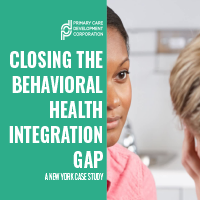Closing the Behavioral Health Integration Gap
This case study focuses on the integration of primary care into behavioral health, where the gap between chronic health conditions and medical care is perhaps most profound. Included are in-depth profiles and policy recommendations.
Download Resource